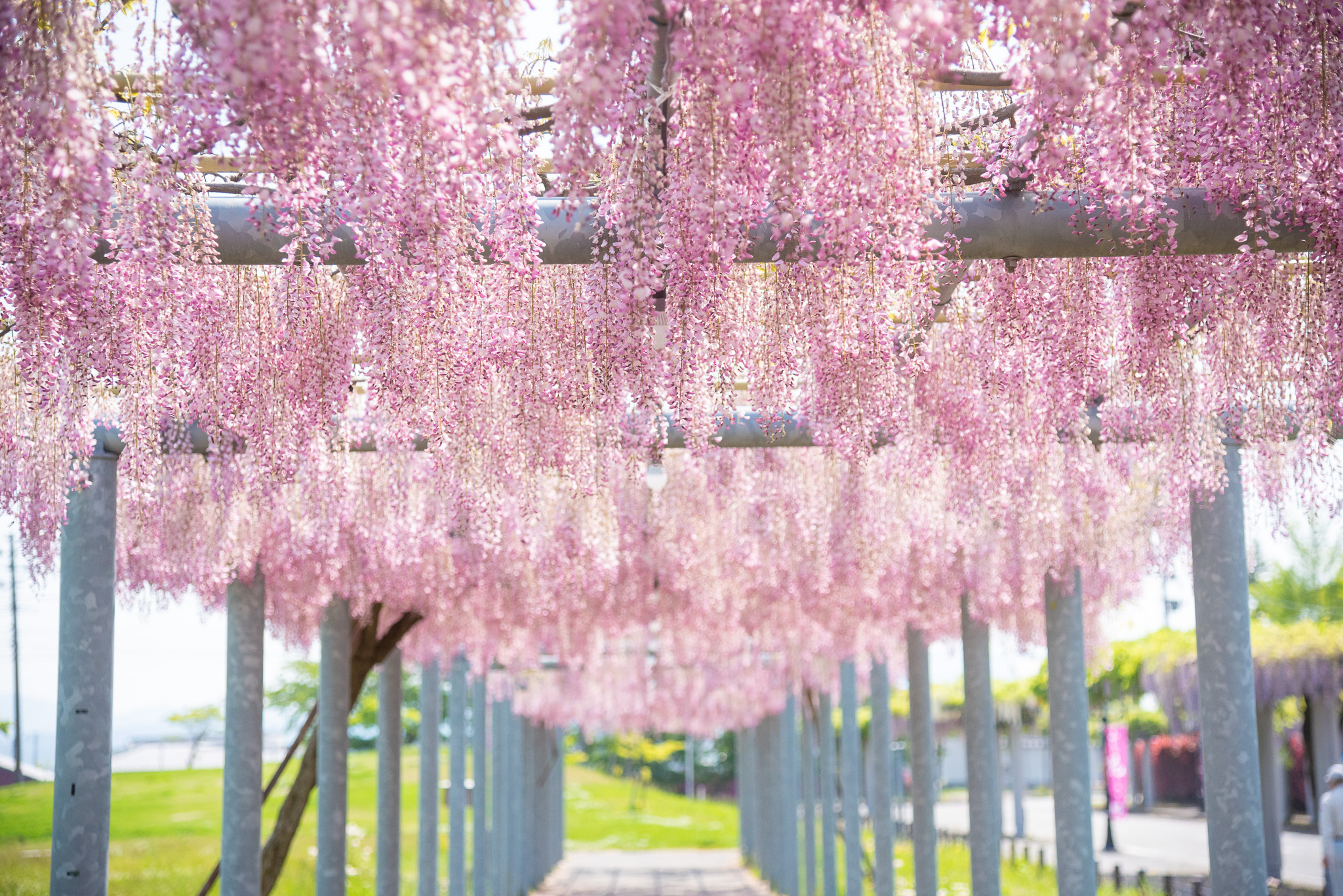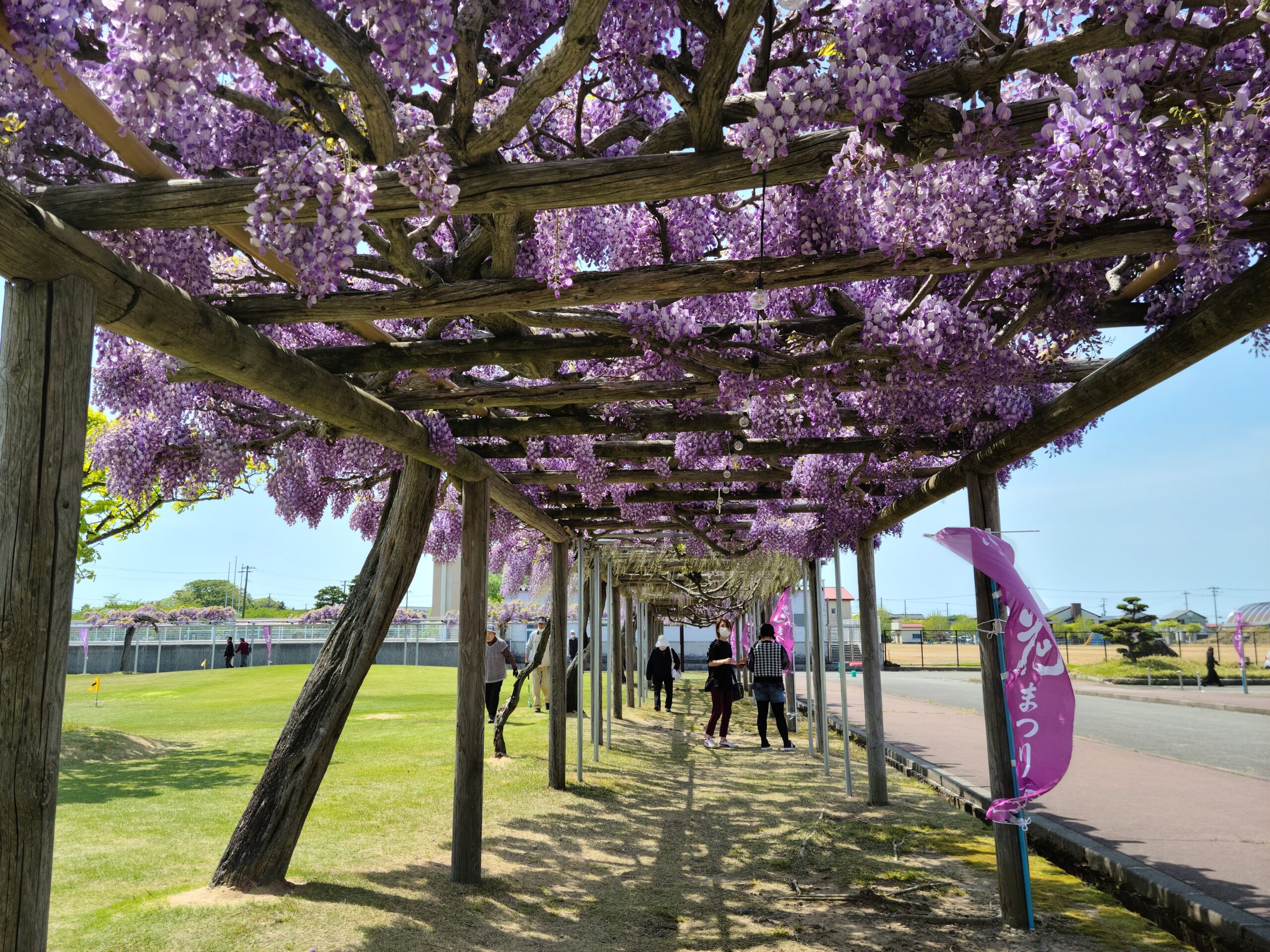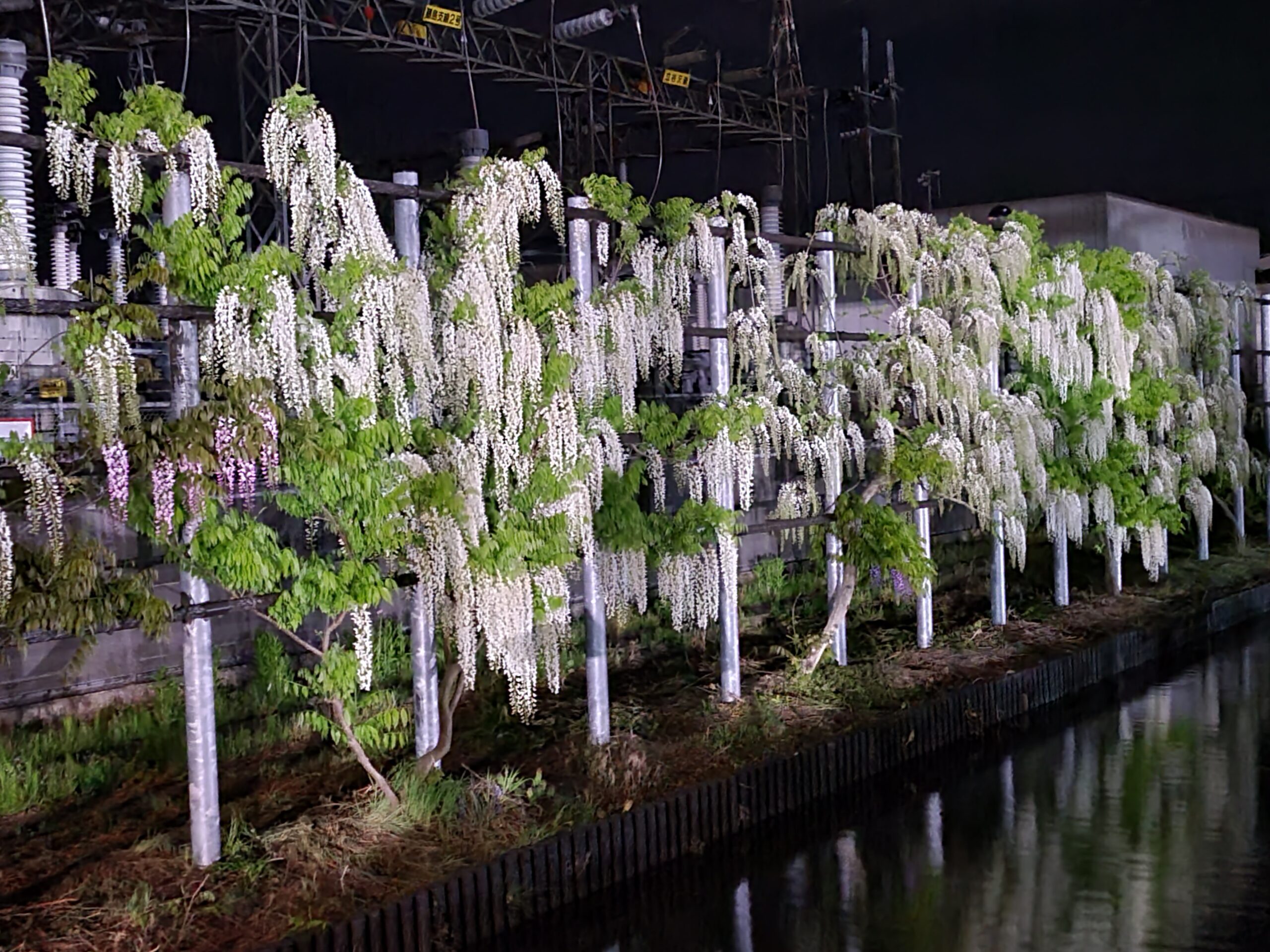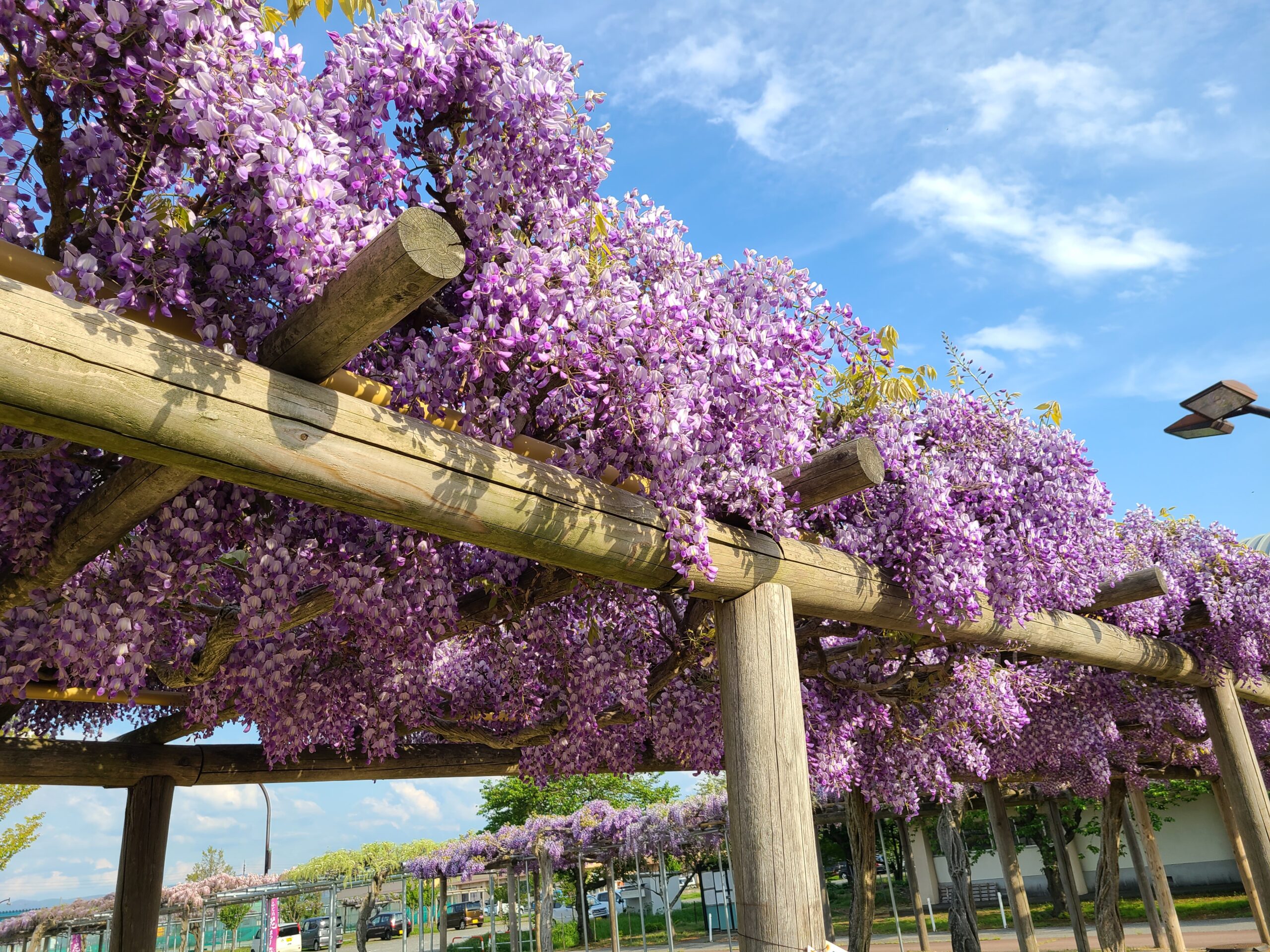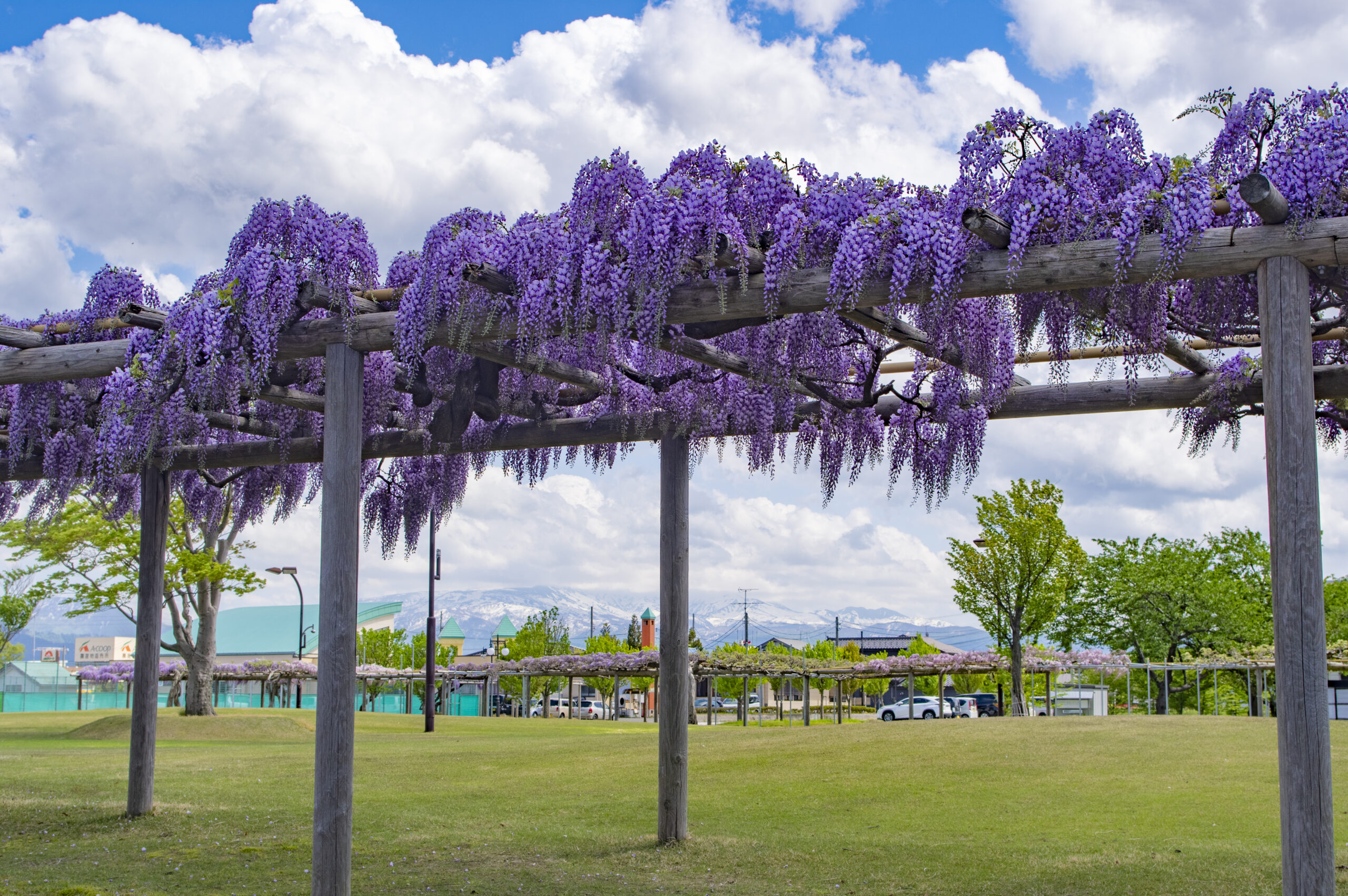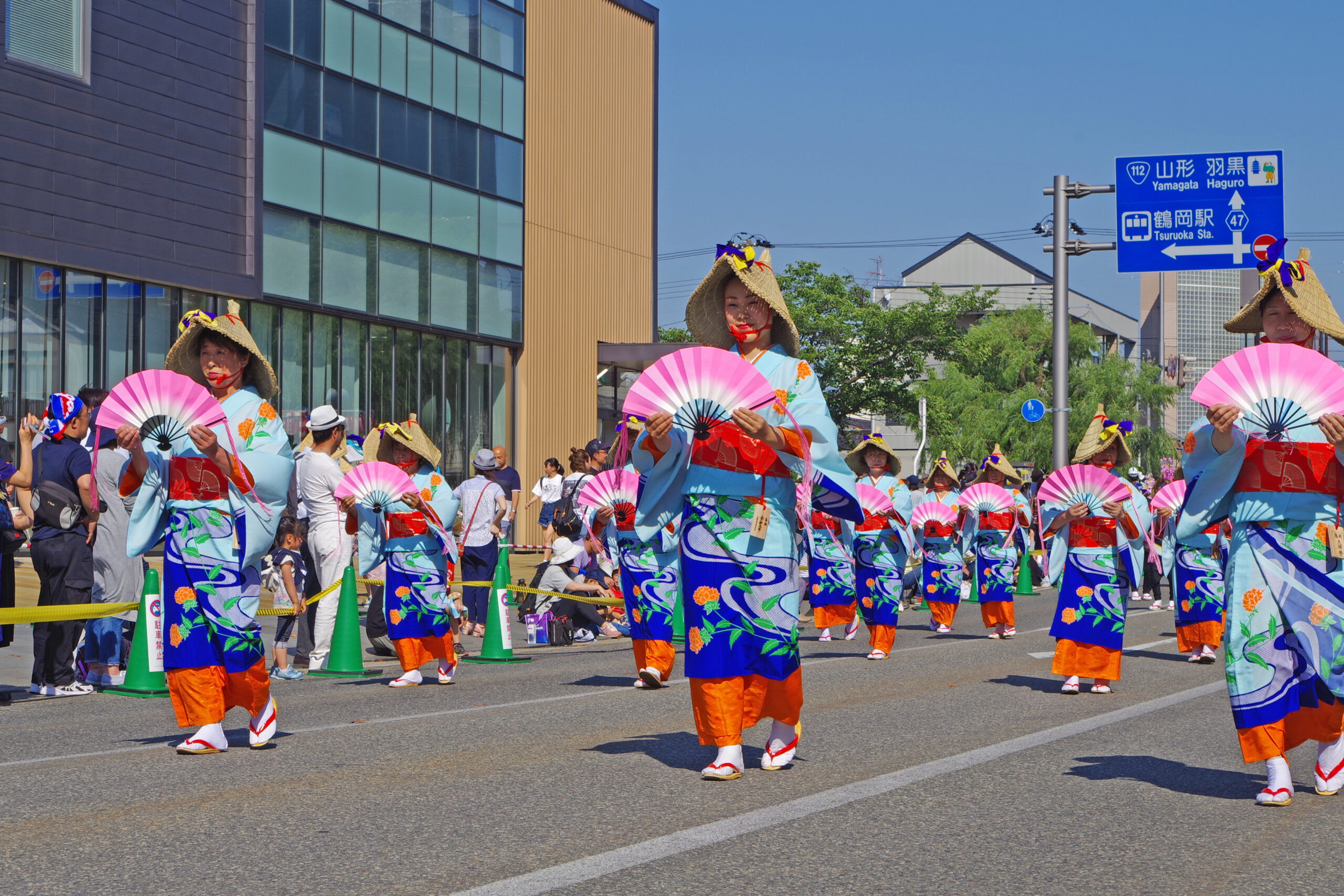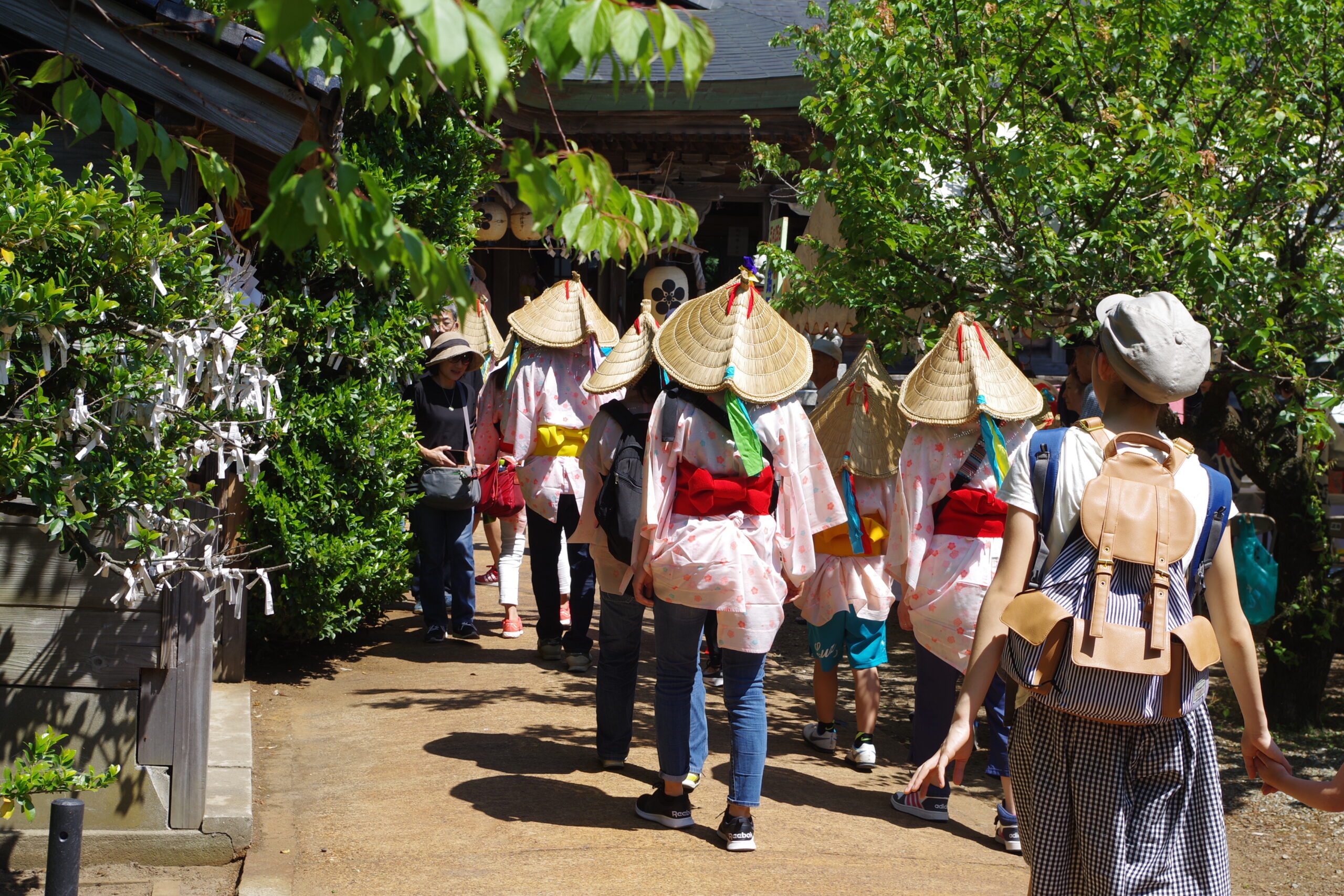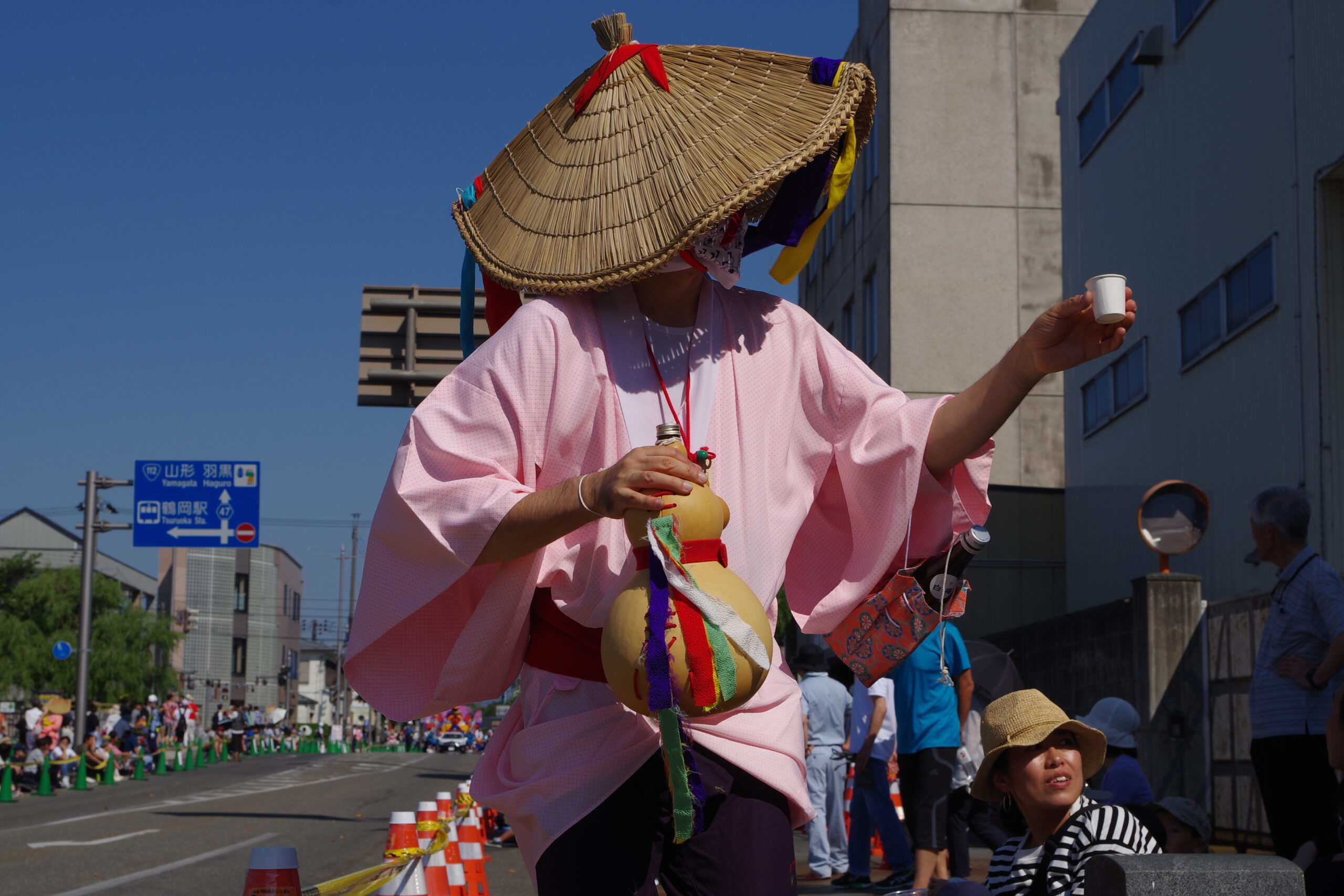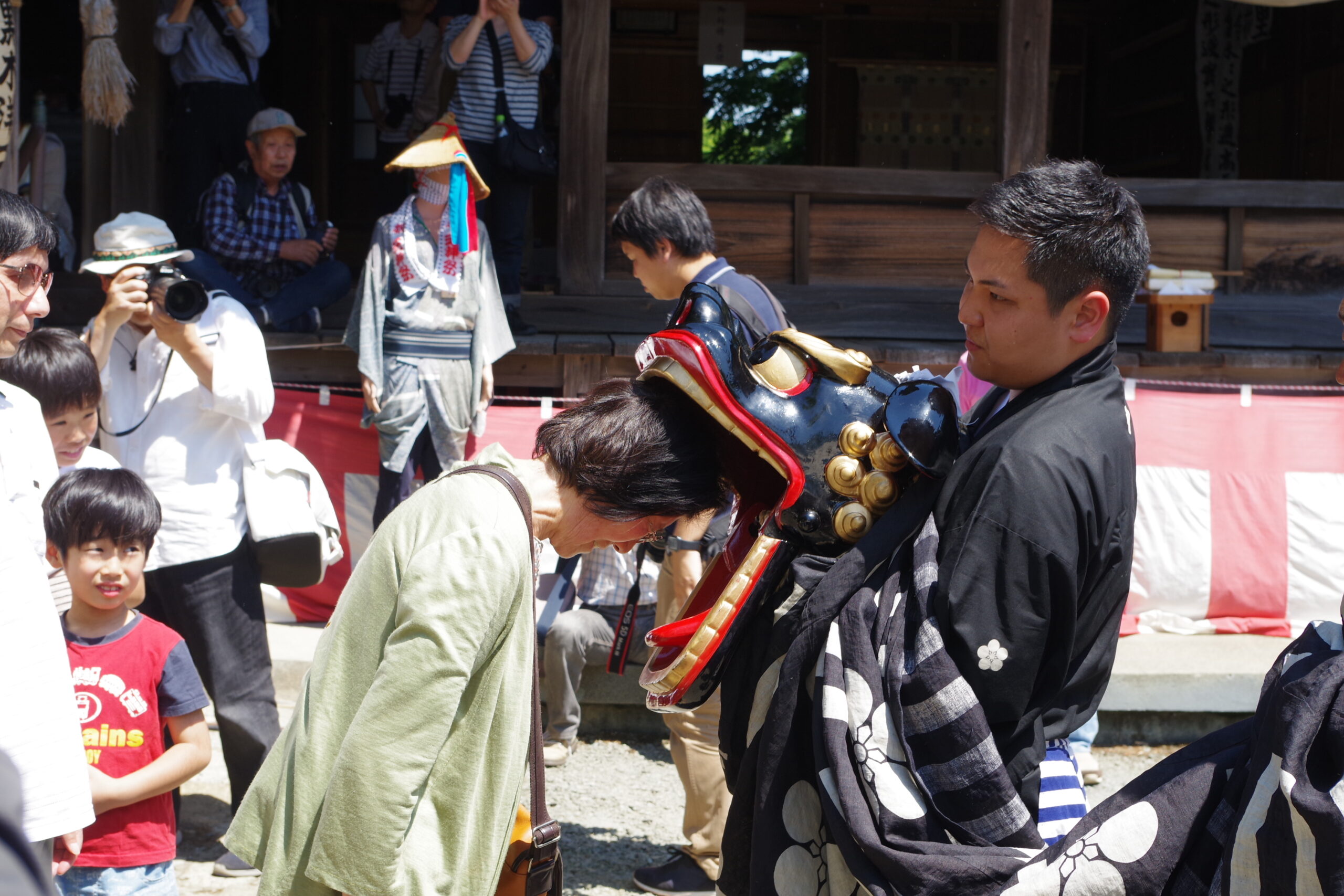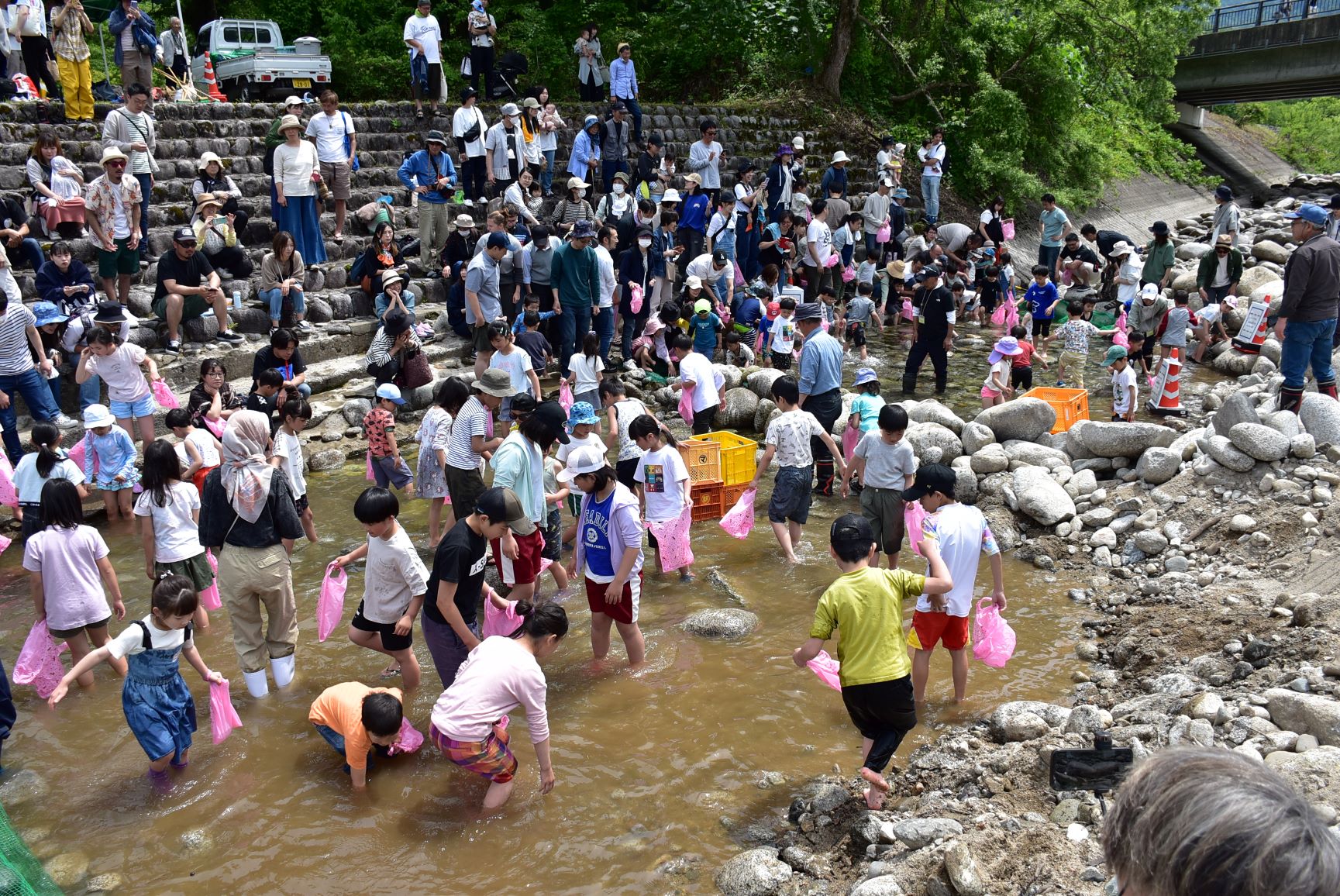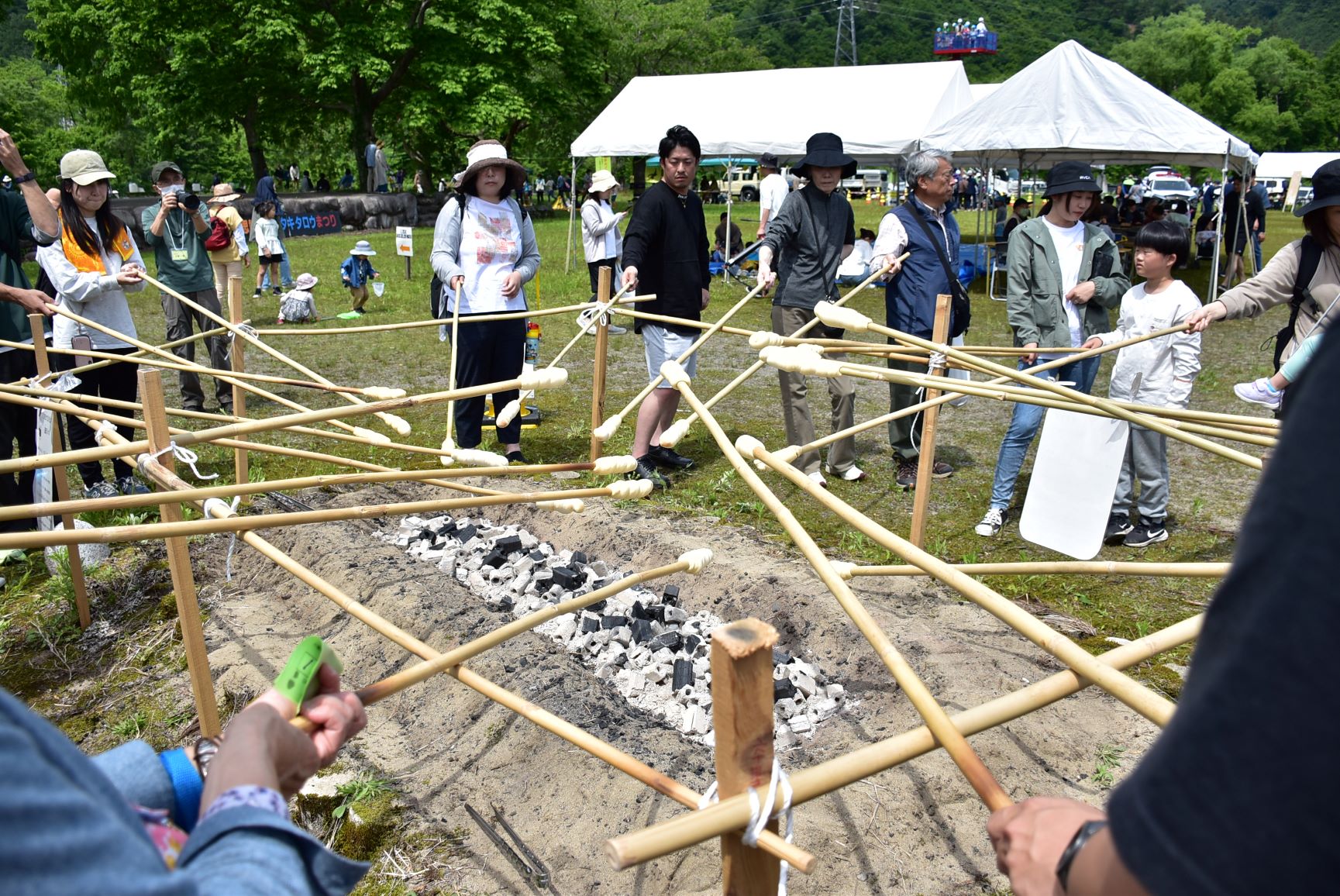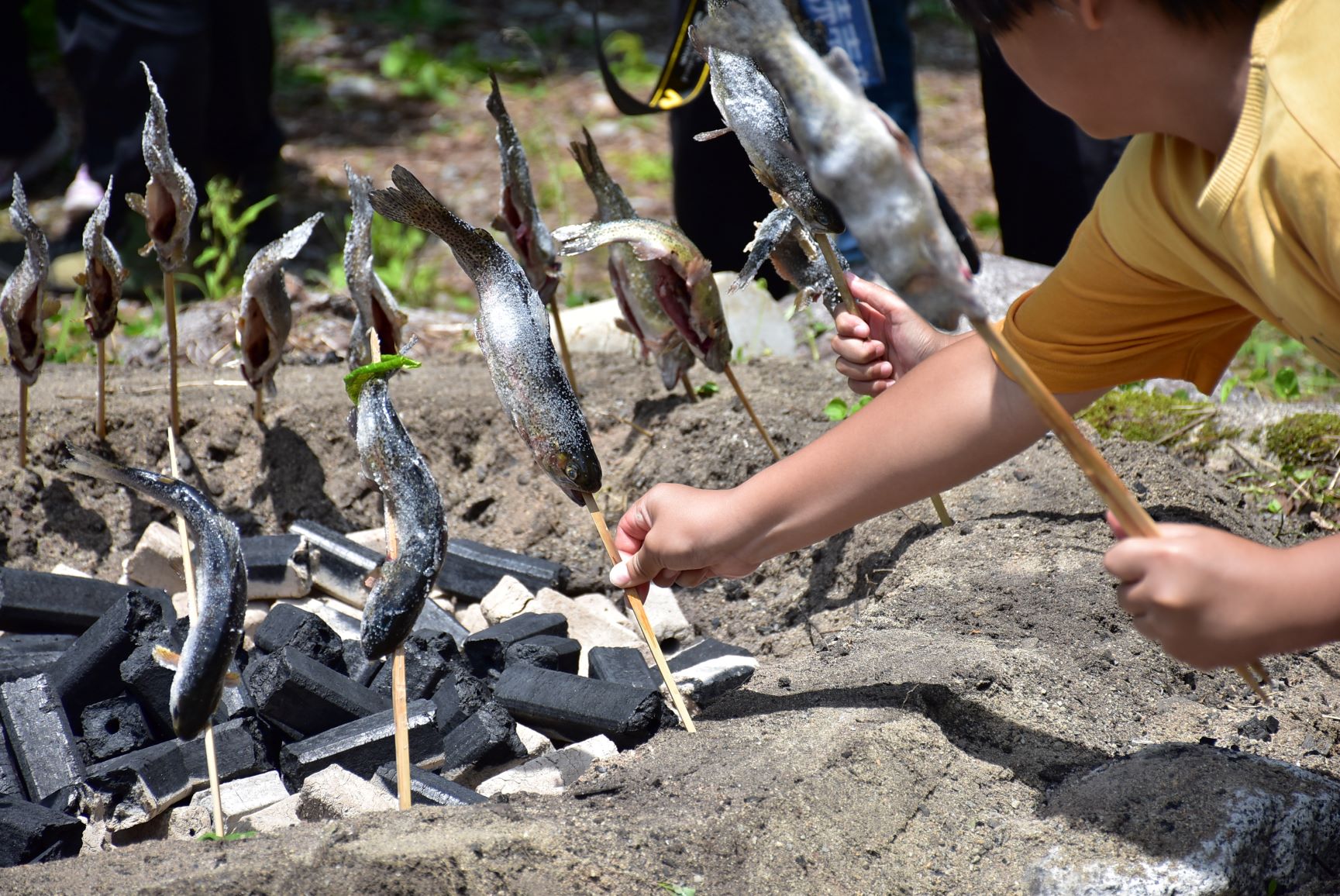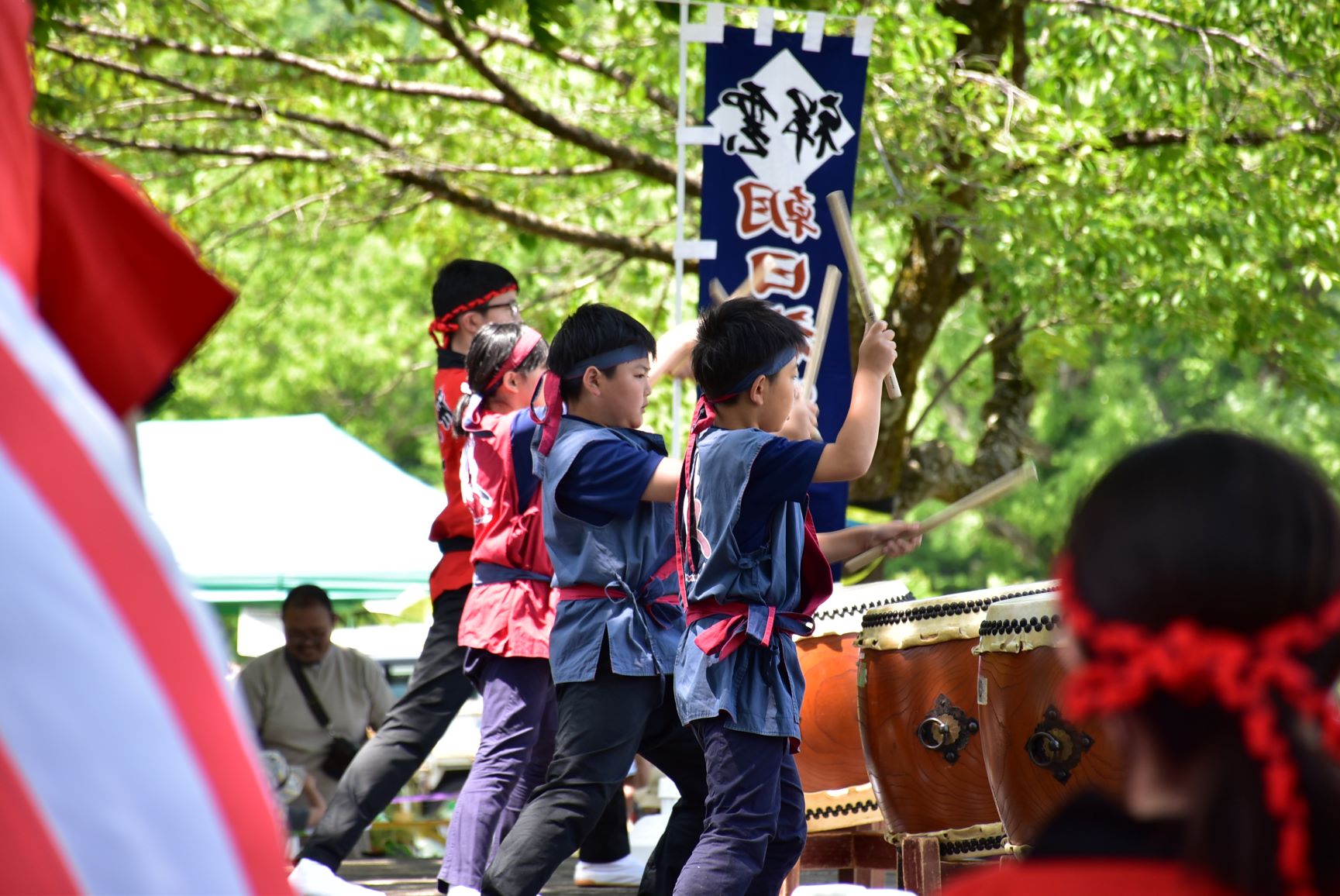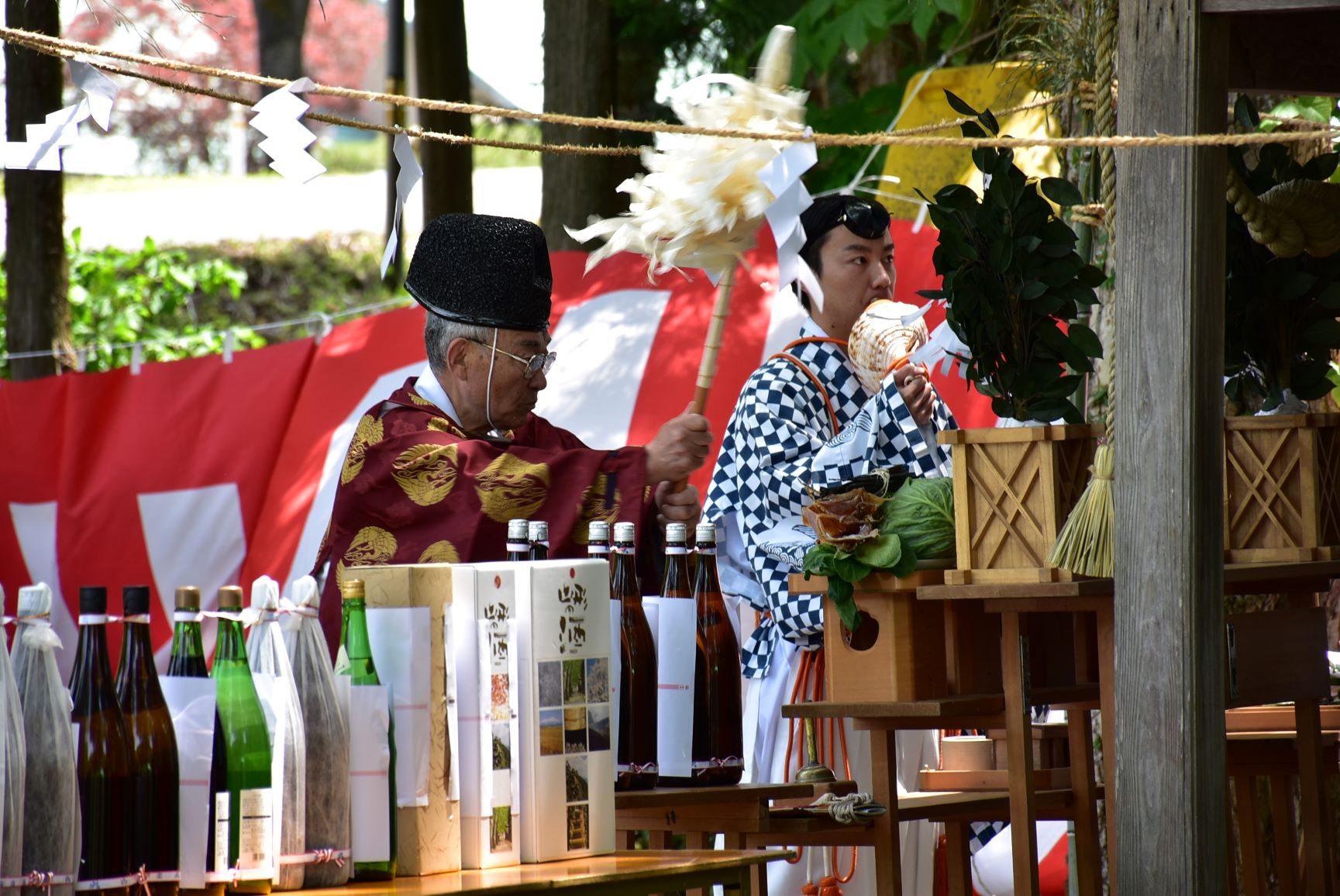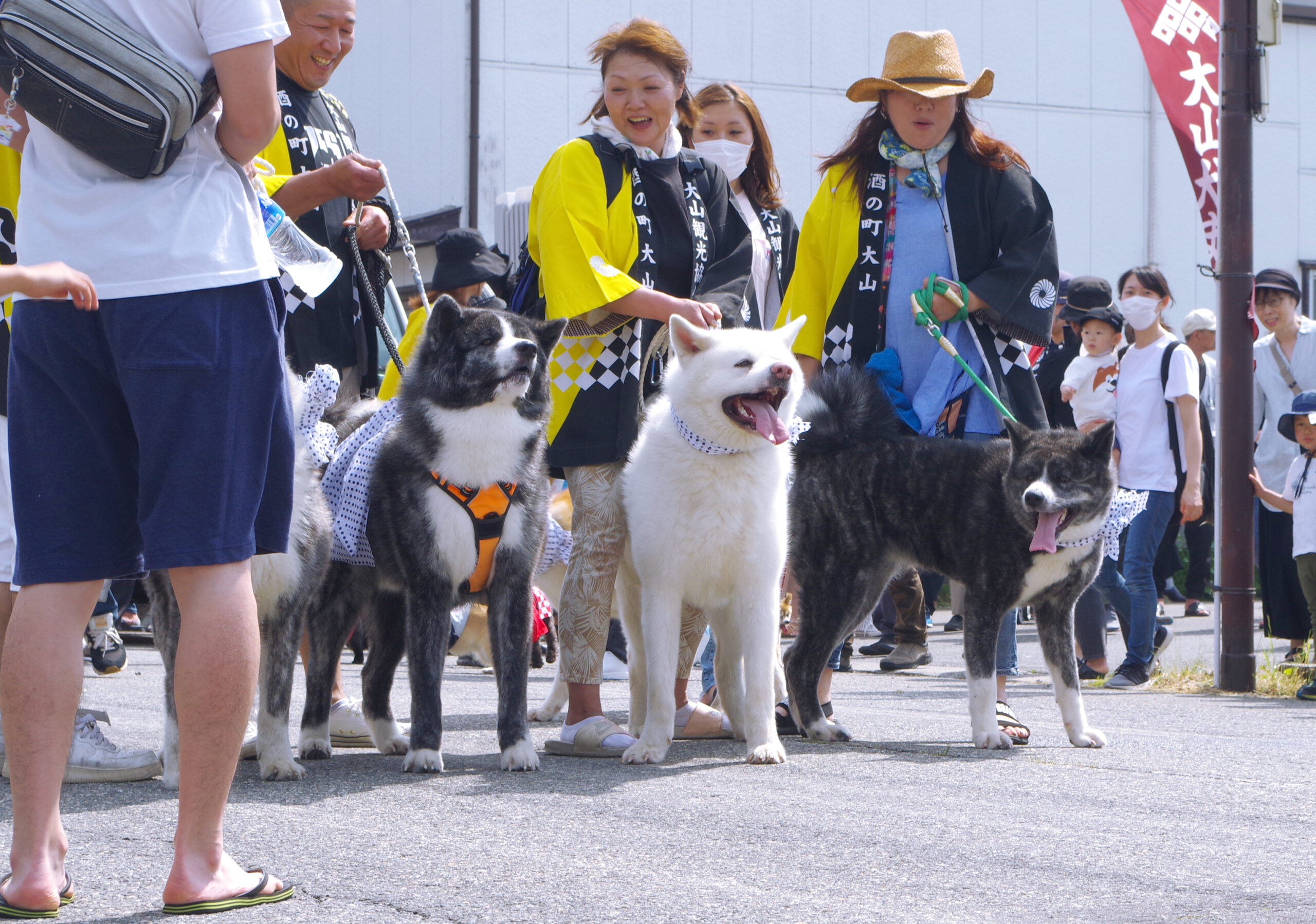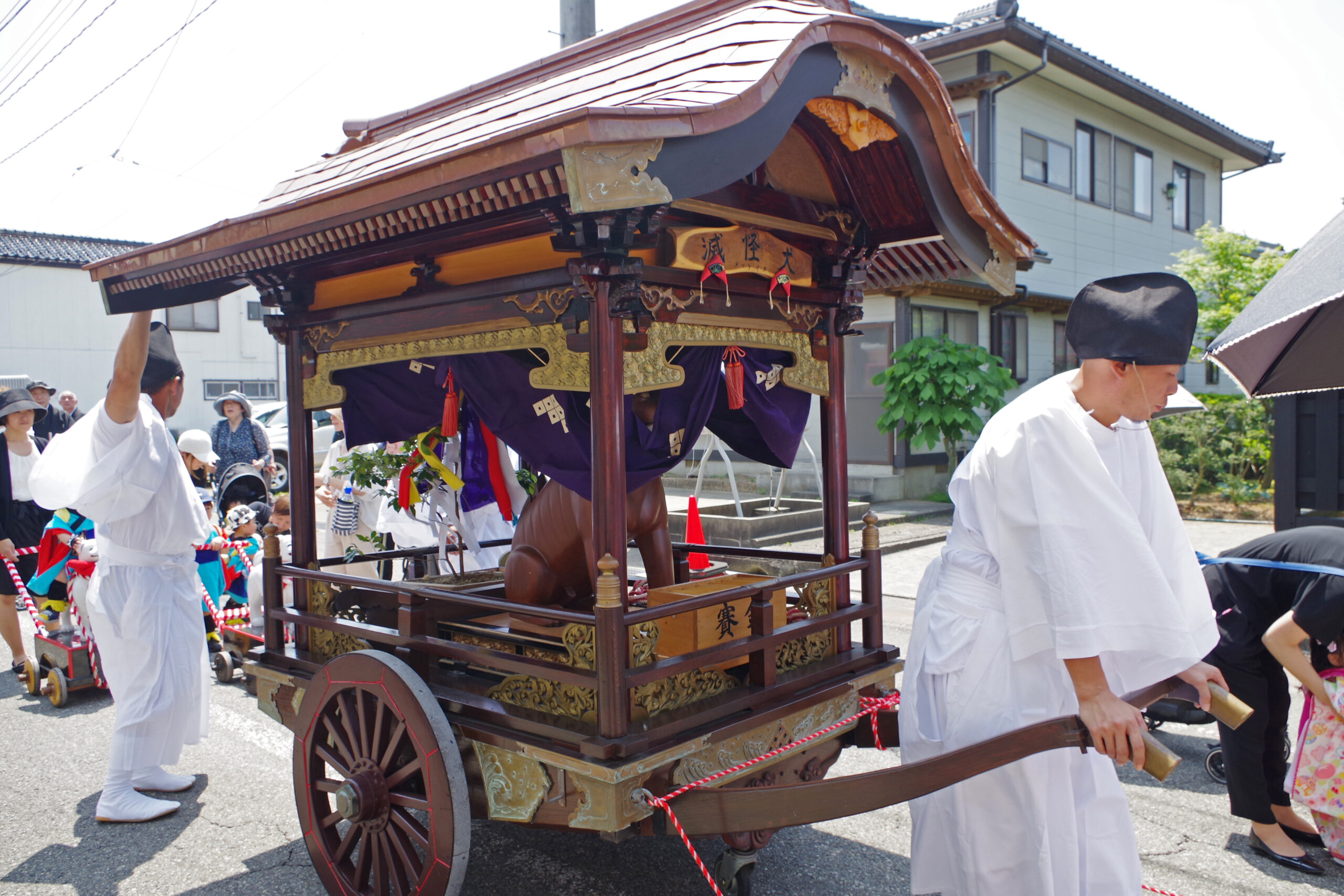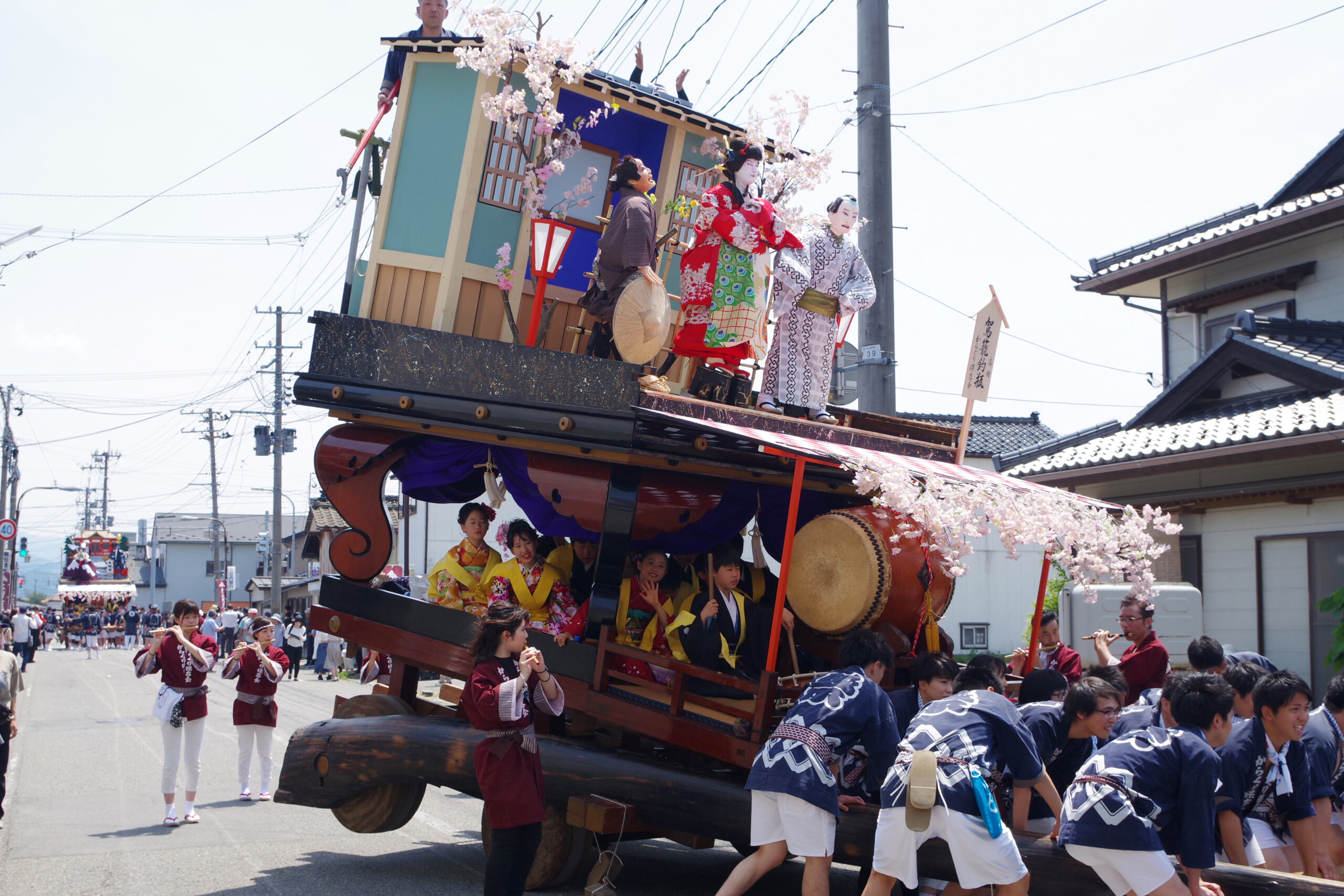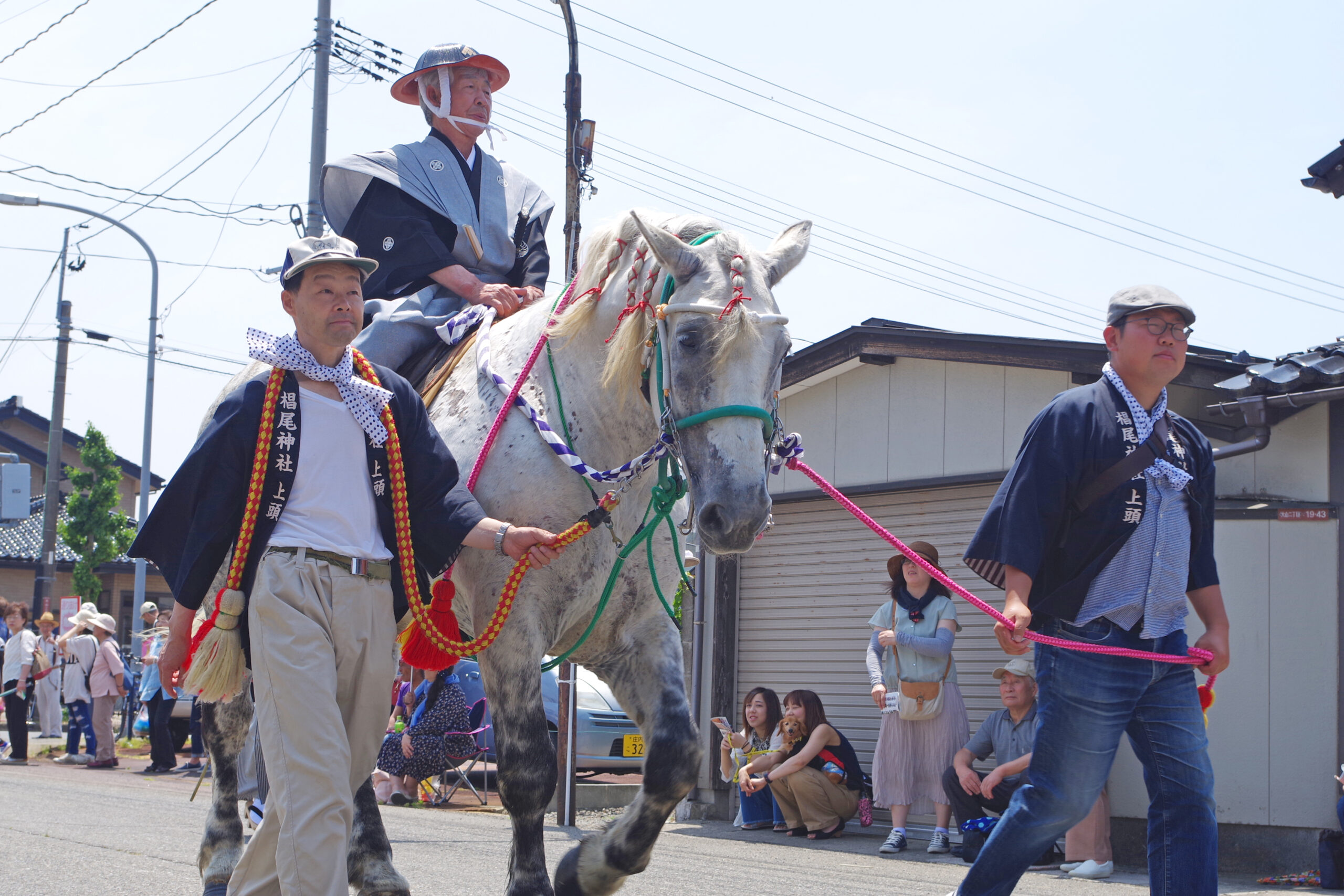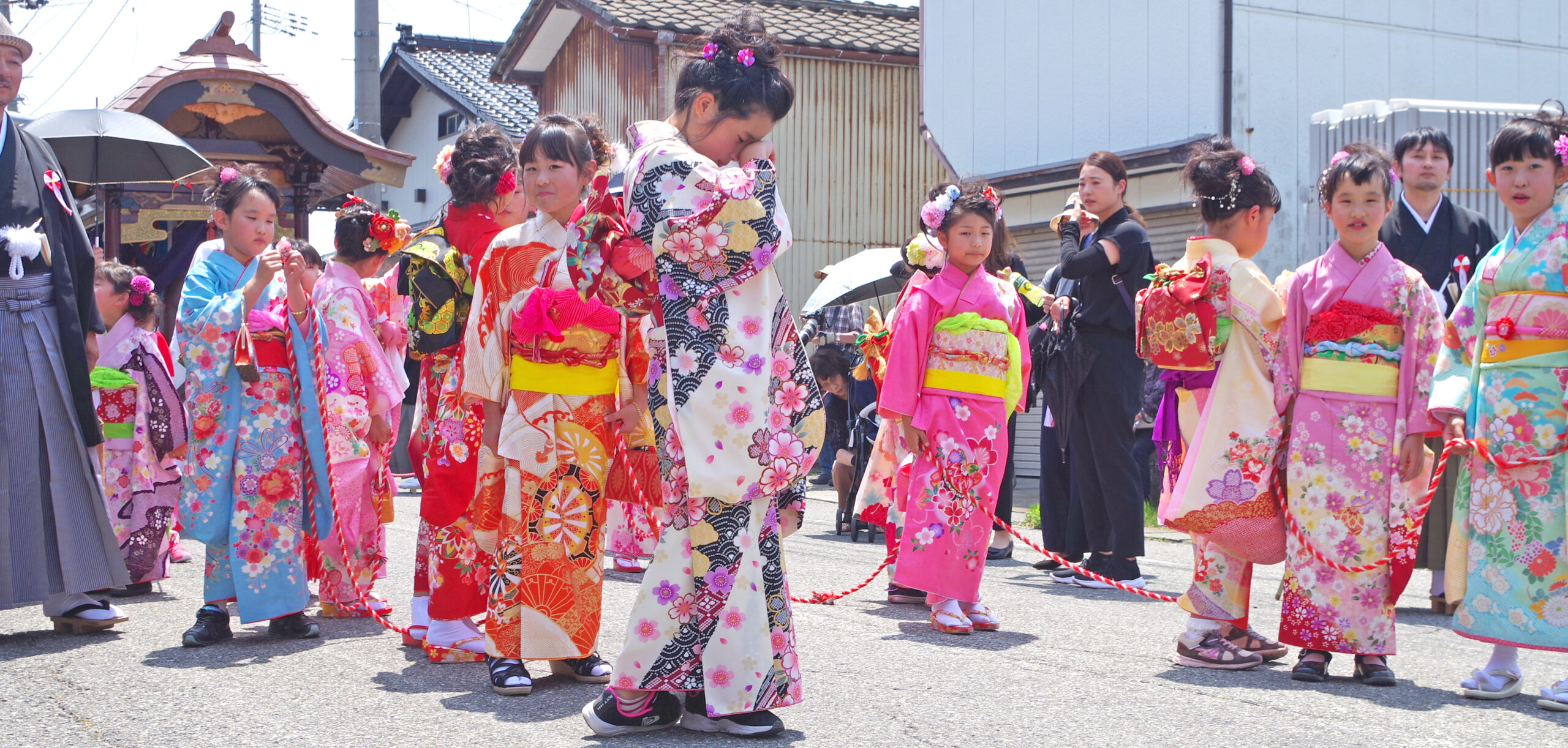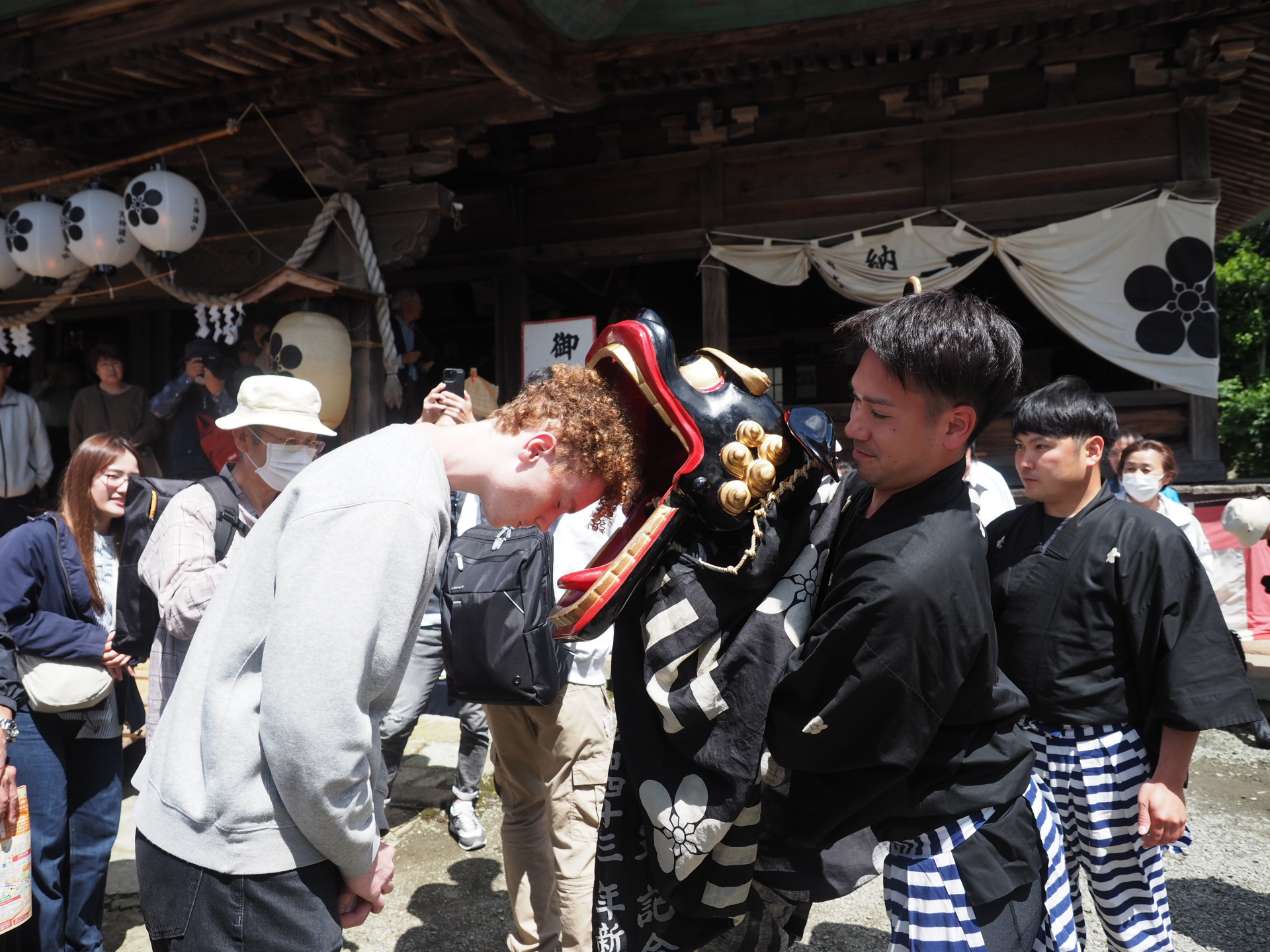
Tsuruoka’s festivals in May & early June (2025 edition)
“Matsuri” — that’s the Japanese word for festival!
While most people associate matsuri with summer — and for good reason: most of them happen in summer — festivals in Japan take place throughout the year, including in spring. And Tsuruoka is no exception.
In Japanese culture, matsuri are moments to celebrate hare (ハレ) — auspicious, extraordinary occasions — in contrast to ke (ケ), which refers to the ordinary, everyday world. This distinction between hare and ke is deeply rooted in Japanese folklore and is the reason why people in Japan not only celebrate with matsuri, but also visit shrines for new life events—like exams, a new car, or the birth of a child.
On hare days, people step out of their usual routines: they wear special clothes (haregi 晴れ着), prepare celebratory meals (gochisō ご馳走), decorate their homes, and gather together in joyful community. This spirit of festivity is at the heart of every matsuri.
In May and June, Tsuruoka comes alive with spring matsuri — perfect opportunities to experience Japan’s hare culture firsthand. Here are just a few you won’t want to miss:
May 10th – Fujishima’s Wisteria Festival (Fujinohana Matsuri)
Less famous than Japan’s iconic cherry blossom festivals, wisteria festivals are nonetheless a beloved spring tradition.
With their graceful, cascading blooms in shades of purple, white, and pink, wisteria flowers bring a soft, elegant charm to villages across Japan — and Tsuruoka is no exception.
One of the best places to admire wisteria in Tsuruoka is Fujishima, a suburb whose name quite literally means “Wisteria Island” — and it lives up to that name!
Wisteria typically bloom a little later — and last a little longer — than cherry blossoms, offering about two weeks of floral beauty. Mid to late May is the perfect time to visit Tsuruoka for a peaceful wisteria-viewing stroll. During the Fujishima Wisteria blooming season, the main sight spots are: Fujishima Historical Park surroundings and the Fujishima Gymnasium. Don’t forget to stop by the Higashi Tagawa Cultural Museum !
- How to go?
-
By train: Take the Uetsu Main Line towards Sakata from Tsuruoka station, get off at Fujishima station (7min).
Walk 10 min. until the Fujishima Historical Park (directions)
May 25th – Tsuruoka’s Tenjin Matsuri
Tsuruoka’s Tenjin Matsuri is one of the three biggest festivals in the Shonai region.
Every year on May 25th, Tsuruoka comes alive with the vibrant and mysterious Tenjin Matsuri. During this unique festival centered around the Tenmangu shrine, hundreds of masked figures known as bakemono — literally “disguised people” (note to Japanese learners: it does not mean “monsters” in this case!) — take to the streets carrying bottles of sake and cups in hand. Their purpose? To offer free sake to anyone willing to accept it.
The origins:
Celebrated across Japan, Tenjin Matsuri honors Sugawara no Michizane (845–903), a respected scholar and statesman later deified as Tenjin, the angry god of thunder and learning.
After being unjustly exiled to Kyushu due to court intrigue, Michizane died in sorrow. Soon after, disasters struck those involved in his exile. To appease his vengeful spirit, he was enshrined as a god — and his legacy is celebrated annually at Tenmangu shrines.
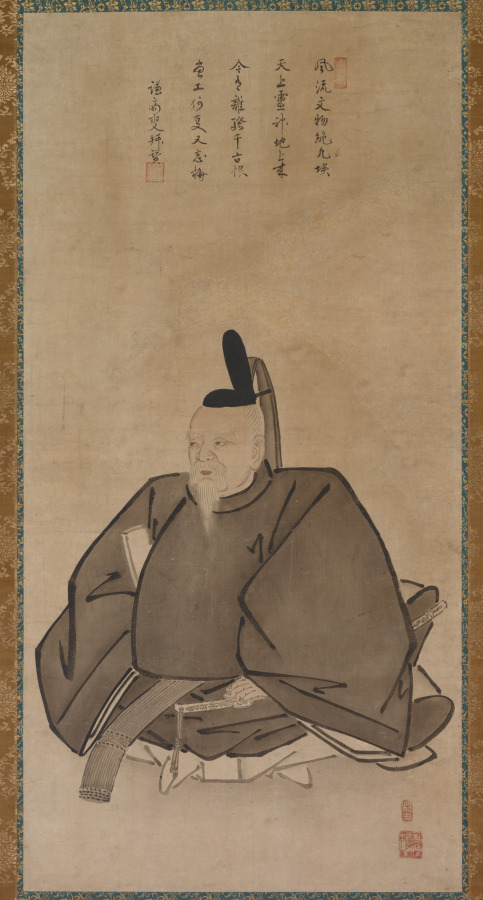
Why the Masks? The Tsuruoka Twist
Tsuruoka’s version of the festival reenacts Michizane’s exile. According to legend, townspeople in Kyoto, unable to speak to an exile without risking punishment from the authorities, disguised themselves with masks, hats, and unisex clothing to bid him farewell in silence — offering sake as a sign of respect.
This masked, wordless farewell legend lives on in Tsuruoka’s unique Tenjin Matsuri, where locals honor Michizane with silent hospitality and shared sake. Events start at 11am but food/drink stands will start offering their products at 9am. The parade will start in the afternoon at around 2pm and end by 6pm.
- How to go?
-
By bus: Bus might not operate as usual since the roads of the central part of Tsuruoka city will be under regulation. Don’t hesitate to stop at our Tsuruoka Tourist Information Office for more information about how to reach the Tenmangu Shrine (it’s a 30min. walk from the station). The festival will start/concentrate around the Tenmangu shrine, but parades will happen in several areas of the central area of Tsuruoka city. Follow the crowds!
May 31st – Takitaro Matsuri
The beloved Takitaro Matsuri, held in Tsuruoka’s southern Asahi area, is a highlight for local families and children. Timed with the opening of the hiking season in the Asahi mountain range, the village of Otori comes alive with fun-filled activities for all ages — from tree climbing and fish catching to slacklining, boat rides on Arasawa Lake, forest concerts, and more! (Please note: some activities require a small cash fee.). Takitaro Matsuri is a joyful and friendly celebration that invites you to immerse yourself in the lush nature of Tsuruoka’s Asahi area. Events start at 9:30am.
- How to go?
-
-By car: You can park your car at the Takitaro Park’s Autocamp field (hence this day, the camp field can’t be used for camping purposes).
-By bus: There will be a free shuttle bus from Asahi Chosha on that day only, that will run every hour or so (it takes 30min. to reach the festival location by bus from there). To reach Asahi Chosha, take the bus bound for Ochiai from Tsuruoka station or S-mall bus terminal and gett off at Asahi Chosha 朝日庁舎.
June 1st – Mt. Yudono’s Opening Ceremony (Yudonosan Kaizansai)
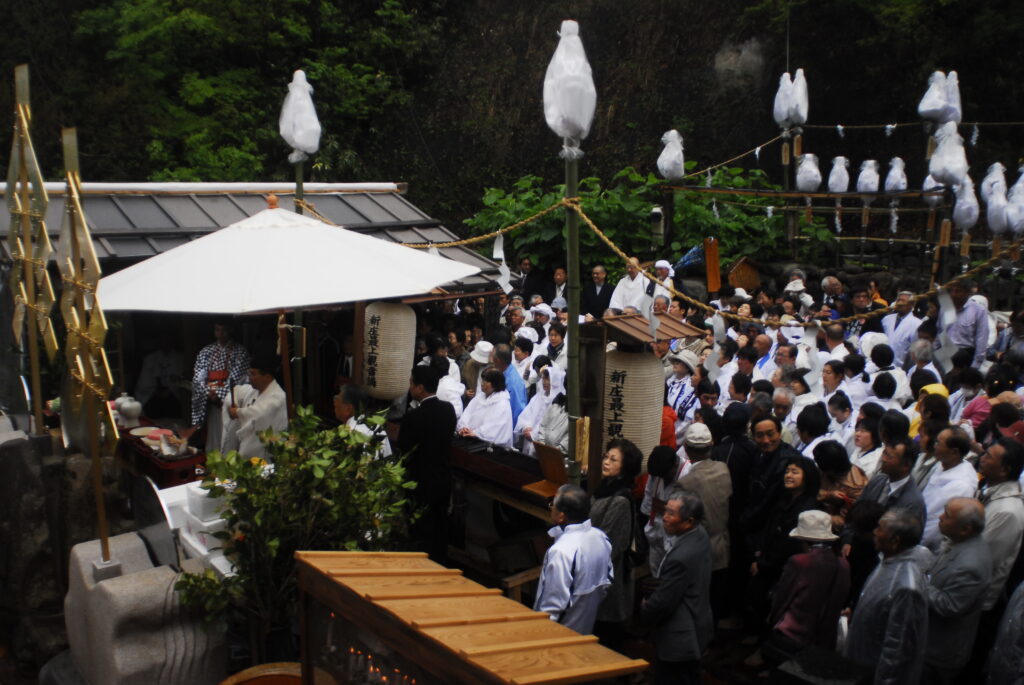
This is not a typical “matsuri” with lively crowds and music. Instead, it marks the official opening of Mt. Yudono’s sacred season with an official prayer at Yudonosan Shrine—marking the start of the mountain’s hiking season. Please note that bus services to Mt. Yudono have not yet been announced, so private transportation is currently required. We apologize for the inconvenience.
Photos of the Yudonosan-jinja shrine and its surroundings are strictly forbidden for religious reasons. The ceremony will start at 11am.
- How to go?
-
-By car: Park your car at Yudonosan Senninzawa’s parking lot. Take the Yudonosan-jinja Sanpai shuttle bus from there (400 yen for a two-way ticket).
June 5th – Oyama’s Dog Festival (Oyama Inu Matsuri)
One of the other three big Shonai matsuri, the Oyama Dog Festival is a centuries-old tradition celebrating the bravery of Mekke-inu, a legendary dog said to have saved the village from demons. The event features lively parades (including dog parades!) and rituals all across the Oyama suburb, beginning in the Uzen-Oyama station and ending at the Sugio Shrine. This festival is dedicated to the loyalty and courage of all dogs in the world who are ready to protect their masters/humans to the point of risking their lives, as shown in the Mekke-inu legend.
The Legend of Mekke-inu
Over 300 years ago, demons haunted Sugio Shrine, demanding the sacrifice of the village’s most beautiful girl each June 5th. One year, a traveling Shugendo pilgrim witnessed the tragic ritual and vowed to stop it. He journeyed to Tanba (modern-day Kyoto) to find Mekke-inu, a dog mentioned in the demons’ song. Though just an ordinary dog, Mekke-inu was brought back to Oyama.
On the day of the sacrifice, Mekke-inu was secretly placed in the sacrificial carriage. When the demons opened it, the dog attacked fiercely. The battle ended with both the dog and demons dead—Mekke-inu had saved the village.
Today, the festival honors this act of courage, celebrating loyalty and protection, and keeping Mekke-inu’s story alive.
Events and parades will start at 10am but parades will start from the Uzen-Oyama station at 11:30am. The culminating point of the festival will be at 4:00pm at Sugio-jinja shrine with the mikoshi divine carriage procession.
- How to go?
-
-By bus: Take the bus bound for Yunohama Onsen (via Kamo Aquarium or Zenpoji Temple). Get off the bus at Oyama Shoginmae, or Oyama yubinkyokumae or Oyamakamihonmachi
Thank you for exploring Tsuruoka’s May and June festivals with us. We hope these unique celebrations inspire you to visit and create unforgettable memories in our vibrant corner of Japan.

